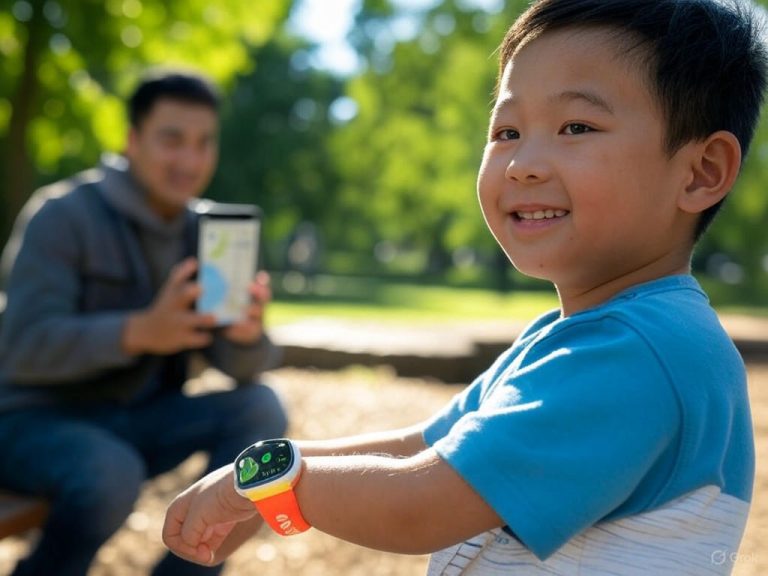
Full-Funnel SEO for B2B SaaS in 2025: Proven Tactics & Metrics
- Introduction: The Realities of Full-Funnel SEO for B2B SaaS in 2025
- Introduction
- AI-Driven Search: The New Battleground
- Why the Old Playbook Fails: Unique SaaS SEO Complexities
- The Full-Funnel SEO Imperative: From Traffic to Revenue
- What Works in 2025: Evidence-Based Best Practices
- Conclusion
- Mapping the Modern B2B SaaS Buyer Journey: Intent, Stakeholders, and Content Alignment
- The Fragmented, Dynamic Reality of Buyer Intent
- Buying Committees: 6–13 Stakeholders, Each With Unique Triggers
- Content & Keyword Alignment Across the Funnel: TOFU, MOFU, BOFU, and Beyond
- Keyword Intent Analysis: Methods, Tools, and Best Practices
- Journey Mapping & Persona Segmentation: Tools and Tactics
- Common Missteps—and How to Avoid Them
- Technical Foundations: Site Architecture, Schema, and AI-Driven Search Optimization
- Technical Foundations: Site Architecture, Schema, and AI-Driven Search Optimization
- Site Architecture: Ruthless Crawl Efficiency and Buyer-Centric UX
- Site Speed and Mobile-First: Non-Negotiables for Rankings and Revenue
- Advanced Schema: Structured Data for Search and AI Surface Dominance
- AI-Driven Search Optimization: LLM Visibility Demands Structure and Credibility
- Performance Benchmarks and Common SaaS Pitfalls: A Quick Checklist
- The Verdict
- Product-Led and Authority-Building Content: What Actually Converts (with Real Benchmarks)
- Product-Led and Authority-Building Content: What Actually Converts (with Real Benchmarks)
- High-Intent Content Wins: Product-Led SEO Pages vs. Awareness Content
- Authority-Building Content: In-Depth Guides, Thought Leadership, and the Backlink Equation
- Leveraging User-Generated Content & Third-Party Validation
- The Real-World Challenges: AI Content Saturation and Declining Blog ROI
- Measuring SEO Success: KPIs, Attribution, and Continuous Optimization for Sustainable Growth
- Real SEO Impact: Revenue, Not Vanity Metrics
- Attribution That Reflects the SaaS Buying Journey
- Connecting SEO to Sales and Retention
- 2025’s SEO Measurement Stack: Tools and Workflow
- Workflow for Iterative Optimization
- Limitations and Opportunities: Navigating the New SEO Reality
- Bottom Line

Introduction: The Realities of Full-Funnel SEO for B2B SaaS in 2025
Introduction
Traditional SEO tactics are no longer enough for B2B SaaS startups navigating the realities of 2025. The era of publishing a handful of keyword-optimized blog posts and waiting for inbound leads has ended. AI-powered search engines, extended and multi-stakeholder sales cycles, and increasingly sophisticated buyer journeys have fundamentally reshaped what it takes to win in organic search—and the evidence is overwhelming.
AI-Driven Search: The New Battleground
The most disruptive force in 2025 is the proliferation of AI-driven search engines and generative AI platforms. Google’s AI Overviews now appear in nearly half of all searches, pushing traditional organic listings and even paid ads below the fold (Kalungi). These AI-generated summaries have driven a 25% reduction in standard informational searches (Triple Dart), while zero-click SERPs are the norm—users increasingly get answers without ever visiting your website (GuptaDeepak). Large Language Models (LLMs) like ChatGPT and Perplexity are changing the rules, rewarding only the most authoritative, structured, and intent-aligned content.
In concrete terms, this means SEO content for SaaS must move far beyond keyword stuffing. AI-powered search engines reward semantically rich, technically robust, and genuinely valuable content. High-value original assets—such as proprietary research, expert analysis, and well-structured topic clusters—are difficult for competitors (and even AI itself) to replicate, and are directly favored in AI Overviews and answer boxes. As highlighted in recent industry reports, “Expertise, proprietary data, and structured clusters consistently outperform generic, surface-level posts.”
Why the Old Playbook Fails: Unique SaaS SEO Complexities
Despite record levels of content investment, 67% of B2B SaaS startups still fail to reach their ideal customers through organic search (LinkedIn, Michael Reddy). The root cause is not just algorithmic change, but a misalignment between old-school SEO and how SaaS buyers actually make decisions.
SaaS sales cycles are long, nonlinear, and consensus-driven—75% to 89% of purchases involve 6–13 stakeholders (Forrester, DemandWorks). Each brings unique priorities, and the buyer journey stretches over months, crossing dozens of touchpoints. Content that targets only the “awareness” stage—such as high-level blog posts or listicles—rarely drives conversions. In fact, bottom-funnel assets like product comparison pages (“ClickUp vs. Monday”), ROI calculators, and pricing pages routinely convert 3–5x better than generic top-of-funnel content (Gravitate, Ahrefs, OnSaaS.me).
Technical complexity compounds the challenge. SaaS websites often waste crawl budget on low-value pages, suffer from poor site architecture, and lack essential schema markup (MADX). These issues directly impact both human and AI-driven discoverability. As AI crawlers become more sophisticated, technical SEO fundamentals—site speed, Core Web Vitals, structured data, and clean navigation—are not optional, but foundational.
The Full-Funnel SEO Imperative: From Traffic to Revenue
Focusing exclusively on traffic volume or superficial keyword rankings is a losing proposition in 2025. The imperative is full-funnel SEO—an integrated strategy mapping keywords and content to every stage of the SaaS buyer journey, from first-touch education to high-intent decision assets.
Why? Because organic search should be your most cost-effective pipeline for demos, trials, and revenue—not just a vanity metric. SaaS companies taking a full-funnel, buyer-journey-aligned approach see 30–50% higher conversion rates from organic traffic compared to those relying on outdated, top-heavy models (Gravitate). Real-world examples abound: Ahrefs’ product-focused blogs and comparison pages drive 3–5x more conversions than generic educational content; Nextiva’s “Lifelock alternatives” page achieved a 9% conversion rate from organic search (OnSaaS.me).
Modern full-funnel SEO means mapping and tracking every keyword and page to its corresponding buying stage: top-funnel guides that educate, mid-funnel comparison pages that address objections, and bottom-funnel assets designed for direct conversion. It also means moving beyond traffic-centric KPIs—B2B SaaS teams must connect organic search performance directly to pipeline and revenue outcomes. Tools such as Google Search Console, Ahrefs, and robust attribution models (e.g., HubSpot, Bizible, ScoreApp) are essential for tying specific pages and keywords to demo bookings, trial signups, and paying users (First Page Sage). Industry benchmarks show that even the best SaaS providers convert less than 5% of qualified organic traffic into leads—so every optimization must be laser-focused on impact.
What Works in 2025: Evidence-Based Best Practices
The highest-performing SaaS SEO teams in 2025 reject trend-chasing in favor of evidence-backed fundamentals:
- Expert-driven, authoritative content: AI and human buyers alike reward deep expertise, original research, and real-world examples (E-E-A-T framework: Experience, Expertise, Authoritativeness, Trustworthiness).
- Structured content and topic clusters: Semantic relationships, internal linking, and comprehensive resource hubs outperform one-off articles.
- Technical precision: Fast, indexable, schema-rich sites—scoring 90+ on Lighthouse and passing all Core Web Vitals—rise above competitors with neglected foundations.
- Human-AI collaboration: Tools like SurferSEO, ChatGPT, and Keyplay accelerate production and research, but require human oversight for accuracy and authenticity. User-generated content (UGC) on platforms like G2, Capterra, and Reddit increasingly validates buyer decisions.
- Revenue-driven measurement: The only metrics that matter are those that map directly to qualified pipeline and Annual Recurring Revenue (ARR).
Conclusion
The bottom line: B2B SaaS SEO in 2025 is not about keeping up with Google’s latest algorithm tweak or chasing every AI tool. It’s about building a robust, full-funnel foundation that mirrors the way real buyers research, compare, and purchase. This requires technical excellence, deep subject matter expertise, and relentless focus on sustainable lead generation and measurable business outcomes—not just traffic spikes or vanity rankings. Anything less, and you risk falling behind in a market that’s moving faster than ever.
| SEO Challenge/Trend | 2025 Reality | Supporting Data/Source |
|---|---|---|
| AI-Driven Search Engines | AI Overviews appear in ~50% of searches, traditional listings pushed below the fold | Kalungi |
| Zero-Click SERPs | 25% reduction in standard informational searches; users get answers without visiting sites | Triple Dart, GuptaDeepak |
| Stakeholders per SaaS Purchase | 6–13 stakeholders involved in 75–89% of purchases | Forrester, DemandWorks |
| Conversion Rate: Bottom vs. Top Funnel | Bottom-funnel assets convert 3–5x higher than top-funnel content | Gravitate, Ahrefs, OnSaaS.me |
| Technical SEO Importance | Site speed, Core Web Vitals, schema markup now foundational, not optional | MADX |
| Conversion Rate from Organic Search | Full-funnel, buyer-aligned SEO yields 30–50% higher conversion rates | Gravitate |
| Qualified Organic Traffic to Lead Conversion | Less than 5% conversion benchmark, even for top SaaS providers | First Page Sage |
| High-Performing Tactics | Expert-driven content, topic clusters, technical excellence, human-AI collaboration, revenue-focused KPIs | Industry best practices |
Mapping the Modern B2B SaaS Buyer Journey: Intent, Stakeholders, and Content Alignment

Mapping the Modern B2B SaaS Buyer Journey: Intent, Stakeholders, and Content Alignment
The B2B SaaS buyer journey in 2025 is no longer a linear funnel—it’s a multidimensional matrix shaped by evolving intent, complex buying committees, and AI-driven search behaviors. Winning organic visibility and pipeline today requires more than publishing generic awareness blogs; it demands a rigorous, granular approach to mapping buyer intent, stakeholder needs, and content to every stage of the funnel. Here’s how leading SaaS teams are operationalizing this shift—and where most startups still get it wrong.
The Fragmented, Dynamic Reality of Buyer Intent
Intent mapping is foundational, not optional.
In 2025, SaaS buyers arrive highly informed: 91% are already familiar with your solution (and your competitors’) before ever speaking to sales, and 81% initiate the first contact themselves (Corporate Visions). This means your content—and your keyword targeting—must meet prospects exactly where they are in their journey, whether they’re evaluating use cases, comparing solutions, or ready to buy.
Buyer intent is also more fragmented than ever. AI-powered search (think Google’s AI Overviews and LLM-driven engines) personalizes queries and surfaces nuanced, long-tail intent at every stage. Top-of-funnel keywords like “what is X software?” have given way to high-intent, bottom-funnel searches: “X vs Y for compliance teams,” “best onboarding analytics SaaS 2025,” or “X integration for Salesforce.” Ignoring this evolution is a recipe for wasted resources and low conversion (see ScaleCrush, CXL).
Real-World Example: Nextiva’s “Lifelock alternatives” page—a textbook BOFU (bottom-of-funnel) asset—yields a 9% organic conversion rate, despite modest traffic volumes. This is emblematic: intent-aligned, bottom-funnel content consistently converts 3–5x higher than generic top-funnel blogs (Gravitate, OnSaaS.me).
Buying Committees: 6–13 Stakeholders, Each With Unique Triggers
Multi-stakeholder buying is the SaaS norm.
A typical B2B SaaS deal now involves 6–13 decision makers spanning IT, finance, operations, and end-users (Forrester, DemandWorks). In fact, 75–89% of enterprise purchases cross multiple departments. The days of selling to a single “ideal customer profile” are over.
Effective full-funnel SEO addresses this complexity by segmenting content and keywords to micro-markets: clusters of personas with shared pain points, triggers, and buying criteria (Lantern Research). It’s not enough to build for a generic ICP; you need persona-level mapping.
Practical Approaches:
- Firmographic & Technographic Segmentation: Leverage data on industry, company size, and tech stack to personalize landing pages and case studies (Twilio Segment, Custify).
- Persona-Specific Content: Build resource hubs and guides for each stakeholder—“ROI calculators for CFOs,” “implementation checklists for IT leaders,” “day-in-the-life walkthroughs for end-users.”
Example: Leading SaaS teams like Ahrefs drive higher conversions by pairing product-focused blogs and comparison pages with persona-targeted resources (Gravitate).
Content & Keyword Alignment Across the Funnel: TOFU, MOFU, BOFU, and Beyond
Intent—not volume—must guide your funnel strategy.
The traditional TOFU–MOFU–BOFU model remains relevant, but only if you match content and keywords to the real questions and objections facing each persona at each stage.
-
TOFU (Top of Funnel):
- Goal: Capture early researchers and build authority.
- Pitfall: Most SaaS startups over-index on “What is X?” blogs, attracting low-converting, unqualified traffic (ScaleCrush, CXL).
- Recommendation: Limit TOFU content to high-quality explainers and thought leadership pieces tied to emerging trends.
-
MOFU (Middle of Funnel):
- Goal: Nurture prospects comparing features, integrations, and use cases.
- Tactics: Invest in comparison guides (“ClickUp vs. Monday”), integration use-case pages, and ROI calculators.
- Example: Ahrefs’ product-focused blogs and comparison pages convert 3–5x better than awareness content (Gravitate, Apexure).
-
BOFU (Bottom of Funnel):
- Goal: Capture high-intent buyers and accelerate sales.
- Content: Pricing pages, demo videos, customer stories, implementation guides, and programmatic SEO assets targeting buying keywords (“[Competitor] alternative,” “[Product] pricing”).
- Performance: BOFU pages frequently achieve 9–10%+ conversion rates even with modest organic traffic (Nextiva, OnSaaS.me).
-
Post-Sale: Retention & Expansion
- Don’t ignore onboarding tutorials, advanced feature guides, customer success stories, and renewal checklists. These drive expansion and reduce churn—critical levers for SaaS growth (Userpilot, Kalungi).
Key Insight: Product-led SEO pages—features, comparisons, and use cases—consistently outperform top-of-funnel educational content for conversion and pipeline (see also Introduction and First Page Sage).
Keyword Intent Analysis: Methods, Tools, and Best Practices
Every keyword must have a mapped intent and funnel stage.
- Tool Stack: Use Ahrefs, Semrush, and Google Search Console to analyze SERPs and map keywords to funnel stages. Does a query surface pricing and alternatives (BOFU) or thought leadership (TOFU)?
- Customer Voice: Mine reviews, support tickets, and sales calls for “jobs-to-be-done” language. Translate these into high-intent, persona-specific long-tail keywords.
- Competitive Analysis: Audit which keywords and content types drive conversions for your top competitors (ExaltGrowth, MADX).
Example: Segmenting keywords by funnel stage and intent allows you to track which themes actually generate demos, trials, and revenue—not just traffic (see also Tracking 360+ blog-driven leads and Monthly cohort analyses).
Journey Mapping & Persona Segmentation: Tools and Tactics
Visualize every touchpoint for every persona.
- Customer Journey Maps: Chart each stakeholder’s path from first touch to onboarding and renewal (Userpilot, Nuoptima).
- Persona-Based Nurture Tracks: Tailor content and follow-up for each stakeholder. A CFO’s journey may start with risk analysis and end with ROI validation; an end-user’s journey focuses on usability and support.
- Segmentation: Use firmographic, technographic, behavioral, and lifecycle data to personalize nurture sequences and retargeting (Custify, Twilio Segment).
Practical Example: Leading SaaS teams build landing pages segmented by use case, industry, and persona (see also Landing Page Segmentation and Homepage Design).
Common Missteps—and How to Avoid Them
Most SaaS startups make the same avoidable mistakes:
- Over-investing in TOFU blogs: This floods your funnel with “garbage” traffic—unqualified visitors who never convert. Focus first on BOFU and MOFU assets—comparison, alternatives, and use-case pages—before layering in TOFU (HackerNoon, SEOMatic).
- Ignoring Stakeholder Diversity: One-size-fits-all messaging fails with buying committees. Map content and nurture flows to each persona’s unique journey.
- Neglecting Measurement: Track performance by funnel stage and persona. Prune or optimize assets that don’t generate leads, revenue, or retention (ScoreApp, Content Marketing Institute, see also Content Pruning Period).
Bottom Line:
Mapping the modern B2B SaaS buyer journey in 2025 means obsessing over buyer intent, stakeholder segmentation, and funnel-stage content alignment—not just traffic volume. The SaaS teams winning organic growth are those treating SEO as a revenue engine, meticulously matching content to the real questions and objections buyers have at every stage and for every persona in the buying committee. If your SEO strategy isn’t built around these realities, you’re already behind.
| Funnel Stage | Goal | Recommended Content Types | Common Pitfalls | Example/Performance |
|---|---|---|---|---|
| TOFU (Top of Funnel) | Capture early researchers and build authority | Explainers, thought leadership, trend analysis | Over-indexing on “What is X?” blogs, attracting unqualified traffic | Limit to high-quality, trend-tied content |
| MOFU (Middle of Funnel) | Nurture prospects comparing features, integrations, and use cases | Comparison guides, integration/use-case pages, ROI calculators | Generic content lacking differentiation | Product-focused blogs & comparison pages convert 3–5x better than awareness content (Ahrefs, Gravitate) |
| BOFU (Bottom of Funnel) | Capture high-intent buyers and accelerate sales | Pricing pages, demo videos, customer stories, implementation guides, programmatic SEO assets | Neglecting buyer intent and key decision keywords | BOFU pages achieve 9–10%+ conversion rates (Nextiva, OnSaaS.me) |
| Post-Sale (Retention & Expansion) | Drive expansion and reduce churn | Onboarding tutorials, advanced feature guides, customer success stories, renewal checklists | Ignoring post-sale content | Critical lever for SaaS growth (Userpilot, Kalungi) |
Technical Foundations: Site Architecture, Schema, and AI-Driven Search Optimization

Technical Foundations: Site Architecture, Schema, and AI-Driven Search Optimization
A full-funnel SEO strategy for B2B SaaS in 2025 is only as strong as its technical underpinnings. With AI-driven search engines, zero-click SERPs, and increasingly sophisticated crawlers, foundational elements like site architecture, schema, and performance are no longer optional—they’re your competitive baseline. Here’s how to build a technical stack that serves both humans and machines across the entire SaaS buyer journey.
Site Architecture: Ruthless Crawl Efficiency and Buyer-Centric UX
Forget the notion that site structure is just about “clean design.” In 2025, site architecture is a growth lever—guiding both users and search engines with maximum efficiency. Too many SaaS startups still copy-paste competitor templates or pile up blog posts, resulting in bloated navigation, redundant content, and wasted crawl budget on pages that never convert.
Best-in-class SaaS sites are mapped to the buyer journey:
- Homepage: Delivers a crystal-clear value proposition, social proof, and frictionless CTAs above the fold. No scrolling required to understand why you exist or what you offer (see Gravitate).
- Landing Pages: Segmented by features, use cases, and persona pain points, making every critical conversion page accessible within two clicks from the homepage. Internal linking is purposeful, not random (SEMrush).
- Blog Hubs: These are no longer content graveyards. Modern SaaS blogs function as conversion pathways, connecting educational content to comparison pages, trials, and demos—mirroring the multi-touch SaaS decision process.
Crawl budget management is now mission-critical. With Google getting even more selective in what it indexes, every wasted crawl means missed opportunities. Use tools like Screaming Frog or SEMrush’s Site Audit to find and eliminate 404s, 500s, redirect chains, and orphaned or thin pages. Keep your XML sitemap perfectly in sync with your actual site structure, and prune “dead weight” content—anything that hasn’t produced demos, signups, or leads in the last 12 months (Backlinko). If a page requires more than two clicks from the homepage, it’s invisible to both Google and decision makers.
Benchmarks:
- Navigation: 5–7 items max, with conversion pages never buried in dropdowns.
- Clicks to conversion: No critical page should require more than two clicks from the homepage.
- Lighthouse Score: Aim for 90+ on all key pages; below 80 is a red flag.
Site Speed and Mobile-First: Non-Negotiables for Rankings and Revenue
Google’s Core Web Vitals are the gatekeepers for both rankings and user trust. In SaaS, where 60%+ of traffic is mobile and bounce rates spike with every extra second of load time (O8, DebugBear), you can’t afford to be slow.
Performance Targets:
- Largest Contentful Paint (LCP): Under 2.5 seconds.
- Interaction to Next Paint (INP): Under 200ms.
- Cumulative Layout Shift (CLS): Below 0.1 (Perfect Search).
Practical fixes:
- Image optimization: Compress all images below 100KB unless demo quality demands more.
- Asset loading: Lazy-load below-the-fold images, preload only mission-critical fonts, and cache static assets for up to a year.
- Internationalization: If you target multiple regions, use tools like GTMetrix and Pingdom to test load times from each country—your “global” performance is only as strong as your slowest region.
Mobile-first isn’t a differentiator anymore—it’s table stakes. Responsive design is the bare minimum. All tap targets must be thumb-friendly, navigation must not break on small screens, and interactive demos/pricing tables must be flawless on any device. If your mobile experience lags, you’re invisible to both prospects and search engines.
Advanced Schema: Structured Data for Search and AI Surface Dominance
Schema markup is now the difference between being surfaced in AI Overviews and being ignored. Generative AI platforms and Google’s own LLMs reward sites with complete, context-rich structured data.
For SaaS in 2025:
- SoftwareApplication Schema: Use on product pages—include ratings, pricing (single price and AggregateOffer for multiple plans), supported platforms, integrations, and third-party validation (G2, Capterra ratings).
- FAQ Schema: Implement on support, pricing, and product comparison pages. Even with Google limiting FAQ visibility to “authoritative” sites, it’s still valuable for voice search and AI assistants (Google Search Central).
- Product and Review Schema: Highlight real testimonials, G2/Capterra ratings, and customer feedback. Even if not always shown in classic SERPs, these signals increase trust with both bots and human buyers.
Audit your schema quarterly using Google’s Rich Results Test and Screaming Frog’s structured data reports. The most common SaaS pitfalls: incomplete schema (missing offers, aggregate ratings, platform data), or applying the wrong type (e.g., Product schema on use-case pages instead of SoftwareApplication). Map each page type to the most relevant schema and update as Google’s requirements evolve.
AI-Driven Search Optimization: LLM Visibility Demands Structure and Credibility
Nearly half of all Google searches now show AI Overviews (Kalungi), and LLMs like ChatGPT and Perplexity are changing the rules of search. Traditional keyword targeting is dead; entity-based, semantically rich, and brand-attributed content is in.
Actionable requirements:
- Content for both search engines and AI: Break out short (40–80 word) fact-rich snippets, answer specific queries directly, and ensure explicit brand/expert attribution.
- Structure first: Content must have clear H2/H3s, schema, and external validation (links to credible third-party sources, user reviews, citations).
- Entity optimization: Use tools like SurferSEO, SEMrush, and Ahrefs to track mentions, citations, and opportunities for entity-based optimization—essential for being referenced by LLMs.
Beyond your own site: Product-led SEO pages, comparison landing pages (e.g., “ClickUp vs. Monday”), and user-generated content on platforms like G2, Reddit, and Capterra are cited organically in AI Overviews. Your product must be mentioned and validated across the web, not just on your own domain.
Performance Benchmarks and Common SaaS Pitfalls: A Quick Checklist
- Lighthouse performance score: Above 90 on all critical pages.
- Navigation: 5–7 items max; conversion pages never buried.
- Image compression: All images below 100KB unless demo quality demands more.
- Clicks to conversion: No page >2 clicks from homepage (audit with SEMrush or Screaming Frog).
- Structured data audits: Run quarterly; monitor for schema errors in Search Console.
- Content pruning: Remove or consolidate pages that haven’t produced sales or leads in 12 months.
Most common SaaS mistakes:
- “Set it and forget it” technical SEO—new features and integrations often break navigation, duplicate content, or invalidate schema.
- Failing to map site architecture to the actual buyer journey—causing critical conversion pages to be buried or orphaned.
- Neglecting mobile and performance—costing you both rankings and revenue.
Best practice: Bake technical SEO reviews into every release cycle and schedule monthly audits.
The Verdict
The technical foundation of full-funnel SaaS SEO in 2025 is relentless about efficiency, clarity, and credibility. Fast, crawlable, and schema-rich sites outperform in organic rankings and are favored by AI-driven search and assistants. If you’re treating technical SEO as a checklist instead of a core growth lever, you’re already falling behind. Prioritize technical health, monitor relentlessly, and adapt as AI search evolves—because in B2B SaaS, technical precision isn’t maintenance. It’s your market advantage.
| Benchmark / Checklist Item | Recommended Standard | Notes / Tools |
|---|---|---|
| Lighthouse performance score | Above 90 on all critical pages | Audit with Lighthouse |
| Navigation items | 5–7 items max | Conversion pages never buried |
| Image compression | All images below 100KB | Exception: demo-quality images |
| Clicks to conversion | No page >2 clicks from homepage | Audit with SEMrush or Screaming Frog |
| Structured data audits | Quarterly | Monitor schema errors in Search Console |
| Content pruning | Remove/consolidate pages not producing sales or leads in 12 months | – |
| Site speed: Largest Contentful Paint (LCP) | Under 2.5 seconds | Core Web Vitals |
| Site speed: Interaction to Next Paint (INP) | Under 200ms | Core Web Vitals |
| Site speed: Cumulative Layout Shift (CLS) | Below 0.1 | Core Web Vitals |
| Schema implementation | SoftwareApplication, FAQ, Product & Review as appropriate | Rich Results Test, Screaming Frog |
| Mobile experience | Responsive, thumb-friendly, flawless navigation | Test across devices |
| XML sitemap | Perfectly in sync with site structure | Update regularly |
| Crawl budget management | Remove 404s, 500s, redirect chains, orphaned/thin pages | Screaming Frog, SEMrush Site Audit |
Product-Led and Authority-Building Content: What Actually Converts (with Real Benchmarks)
Product-Led and Authority-Building Content: What Actually Converts (with Real Benchmarks)
High-Intent Content Wins: Product-Led SEO Pages vs. Awareness Content
Let’s be clear: in 2025, not all SEO content is created equal—and for B2B SaaS startups, the gap between content that actually drives pipeline and content that pads vanity metrics is wider than ever.
Product-led, bottom-of-funnel (BOFU) SEO assets—such as feature breakdowns, use case pages, and, most critically, competitor comparison pages—are the primary engines of qualified pipeline and conversion. The evidence is overwhelming: bottom-funnel pages like direct competitor comparisons, in-depth pricing breakdowns, and ROI calculators consistently convert 3–5x better than generic educational blog posts (Gravitate). Industry benchmarks put conversion rates for these high-intent pages at 3–5%, a dramatic leap over the sub-1% rates typically seen in top-of-funnel content (First Page Sage).
Real-World Example:
Ahrefs’ product-focused blog posts and comparison pages (“ClickUp vs. Monday”, “Notion vs. Airtable”) aren’t just high-traffic—they’re direct engines for demo bookings and paid signups. In field tests and across SaaS case studies, these comparison landing pages achieve average time-on-page above 3 minutes and bounce rates under 45% (Apexure). Free trial signup pages also perform well, but visitors who book demos from product-led pages are typically more qualified and move through the sales cycle faster—a pattern also seen with Nextiva’s “Lifelock alternatives” page, which achieved a 9% conversion rate from organic (Nextiva).
The throughline is always the same: content that addresses a buyer’s immediate pain—showing how your solution solves their specific use case and how it compares to alternatives—outperforms generic “thought leadership” or ultimate guides when it comes to pipeline and revenue.
Benchmarks to Watch
- Product-led & comparison pages: 3–5% conversion rate (visitor to qualified lead/demo)
- Educational/awareness blog content: 0.5–1.2% conversion rate (often lower for SaaS with complex, multi-stakeholder sales cycles)
- Full-funnel, integrated approach: 30–50% higher organic conversion rates overall (Gravitate)
Authority-Building Content: In-Depth Guides, Thought Leadership, and the Backlink Equation
Authority-building content remains essential—but its value in 2025 has shifted toward trust, engagement, and off-page SEO, rather than direct conversion.
In-depth guides, original research, and executive/founder-driven thought leadership are still critical for establishing topical authority and earning high-value backlinks. But these assets rarely convert on their own. Their power lies in driving engagement, establishing trust, and serving as natural link magnets—especially in an AI-dominated, zero-click search landscape.
Key Data Points:
- Comprehensive resources (e.g., proprietary benchmarks, original surveys, unique frameworks) earn 2–4x more quality backlinks than standard blog posts (SeoProfy, Growth Partners Media).
- Expert interviews and stat-driven research outperform generic “how-to”s for backlink acquisition and AI Overview citations.
- Founder-led content (first-hand stories, technical deep-dives, or bold opinions) is referenced more often than anonymous or ghostwritten content, especially when distributed across LinkedIn, Reddit, and review platforms (Gravitate, LinkedIn).
Buyers are more sophisticated—and more skeptical. In 2025, 73% of B2B SaaS buyers say they prefer vendors who educate rather than sell (Joydeep Dey). However, they are also inundated with rehashed AI content and generic advice. Only deep, original, and expert-driven content stands out—especially when it’s authored or endorsed by a credible leader.
Tactics That Build Authority and Earn Backlinks
- Original Research & Data-Driven Content: Proprietary benchmarks and annual industry reports generate 100+ referring domains per year when executed well.
- Expert Roundups & Interviews: Q&As with industry leaders or power users attract organic links and are frequently cited in AI Overviews and third-party reviews.
- User Guides with Real-World Screenshots: Step-by-step guides that document actual product workflows (not just theory) are referenced in community forums and UGC-driven platforms.
- Distribution to Third-Party Platforms: Google’s AI Overviews and ranking signals increasingly favor content validated by Reddit, LinkedIn, G2, Capterra, and TrustRadius. Brands that syndicate or co-create content with their user base—and don’t limit distribution to their own blog—win the authority game (Kalungi).
Leveraging User-Generated Content & Third-Party Validation
User-generated content (UGC) is the new trust signal. In 2025, 56% of brands are prioritizing UGC (Influencer Marketing Hub), and with good reason: buyers crave authenticity. Reviews, testimonials, and customer use case stories published on G2, Capterra, TrustRadius, Reddit, and even LinkedIn posts outperform branded “case studies” hidden on your site. UGC isn’t just social proof—Google and AI-powered search now elevate these signals in rankings and AI Overviews.
Best practices:
- Integrate reviews and testimonials directly on high-intent product and comparison pages, not just a “Testimonials” tab (WordStream).
- Incentivize and curate real user stories for third-party review sites and relevant community threads.
- Monitor and engage with UGC across platforms; active participation drives visibility and trust in AI-powered search interfaces.
The Real-World Challenges: AI Content Saturation and Declining Blog ROI
Here’s the reality check: the traditional B2B SaaS blog is facing diminishing returns. Even industry leaders like HubSpot and Salesforce are reporting stagnant or declining blog traffic in 2025, despite churning out content at scale (Elena Verna). AI-powered search and zero-click results mean fewer visitors ever reach your site, while programmatic and AI-generated content have flooded Google with low-differentiation posts.
Key challenges:
- AI Overviews now appear in nearly half of all searches. Your content is more likely to be summarized or referenced by an LLM than actually visited (Kalungi).
- Traditional blog posts rarely earn new inbound links or social traction unless they feature original research, strong opinions, or expert insights (Growth Partners Media).
- Buyers increasingly validate vendors through third-party and community content, not just your owned channels.
Is blogging dead? Not exactly. A strategic, consistently updated blog that delivers original insights, proprietary frameworks, or deep expertise can still pay dividends—but the bar for quality is much higher. Automation and generative AI are useful for scaling production, but human expertise and voice are non-negotiable for differentiation (Progress, LinkedIn). Treat AI as a “co-pilot,” not a replacement.
Bottom Line for B2B SaaS Startups in 2025
- Double down on product-led, bottom-funnel content—these assets drive the majority of high-quality pipeline and should be the backbone of your SEO investment.
- Invest in authority-building assets—in-depth guides, data-driven reports, and authentic thought leadership—but measure success by engagement, backlinks, and influence, not direct conversions.
- Leverage UGC and third-party validation everywhere—prioritize content that lives (and earns mentions) beyond your own site.
- Don’t chase content volume. Focus on quality, originality, and strategic distribution—those are the only levers that cut through in an AI-saturated, zero-click search landscape.
If your product-led pages aren’t converting 3–5x better than your generic blog content, it’s time to rebuild your content strategy for the realities of B2B SaaS SEO in 2025.
| Content Type | Primary Purpose | Conversion Rate / Impact | Key Metrics / Notes |
|---|---|---|---|
| Product-led & Comparison Pages | Bottom-funnel lead generation | 3–5% (visitor to qualified lead/demo) | 3–5x higher conversions than top-funnel content; avg. time-on-page >3 min; bounce rate <45%; up to 9% on high-performing pages |
| Educational/Awareness Blog Content | Top-funnel awareness & nurturing | 0.5–1.2% | Lower for complex SaaS sales cycles; primarily drives traffic, not pipeline |
| Full-funnel, Integrated Approach | Organic pipeline growth | 30–50% higher organic conversion rates overall | Combines product-led, authority, and UGC content |
| In-depth Guides, Original Research | Authority building & backlink acquisition | 2–4x more quality backlinks than standard posts | Drives engagement, trust, and off-page SEO; not direct conversions |
| User-Generated Content (UGC) | Trust & validation | 56% of brands prioritize UGC | Drives authenticity, 3rd-party validation, and improved search/E-E-A-T signals |
| Expert Interviews/Founder-led Content | Thought leadership, authority | More citations & backlinks vs. anonymous content | Boosts credibility, especially on LinkedIn, Reddit, review sites |
Measuring SEO Success: KPIs, Attribution, and Continuous Optimization for Sustainable Growth
Measuring SEO Success: KPIs, Attribution, and Continuous Optimization for Sustainable Growth
Real SEO Impact: Revenue, Not Vanity Metrics
For B2B SaaS startups in 2025, the central question isn’t “How much traffic are we getting?”—it’s “How much pipeline and revenue is organic search delivering, and are we acquiring customers who stick?” The era of chasing vanity metrics—pageviews, raw sessions, or superficial keyword rankings—is over. Recent data shows only 44% of B2B SaaS companies consistently achieve their growth targets, often because they’re tracking the wrong signals (Kalungi). In a market where even the best SaaS teams convert less than 5% of qualified organic leads (OnSaaS.me), focusing on traffic alone is dangerously misleading.
Instead, leading SaaS marketers anchor their measurement stack around business outcomes. The essential KPIs include:
- Revenue sourced from organic: Track actual ARR or deal value attributable to organic search, not just demo signups or trial starts.
- Pipeline contribution: Measure what percentage of your qualified pipeline originates from organic, mapped to sales stages.
- Customer Acquisition Cost (CAC): Are SEO-driven leads reducing your blended CAC quarter over quarter? CAC efficiency is a make-or-break metric in SaaS (LabsMedia).
- Churn rate by channel: Are customers acquired via organic search retaining at or above your company average? If not, revisit your keyword and content targeting (Kalungi).
- Customer Lifetime Value (CLV): Are SEO-acquired customers higher value and less likely to churn? Track expansion, upsell, and renewal rates over time.
Superficial metrics like bounce rate, time on page, or session counts only matter if they correlate with downstream conversion and retention. The most effective SaaS teams build dashboards that answer, “How is organic moving the revenue needle, and at what cost?” If you can’t connect SEO to CAC, CLV, and churn, you’re optimizing in the dark.
Attribution That Reflects the SaaS Buying Journey
Attribution is the Achilles’ heel of SaaS SEO—especially as buying journeys stretch months and span 6–13 stakeholders (Forrester). Single-touch attribution is obsolete. It ignores organic’s influence at every stage, from initial awareness (top-of-funnel guides and authority-building content) to conversion (comparison pages, ROI calculators, pricing assets).
Modern SaaS teams deploy multi-touch attribution and cohort analysis to reveal the real impact of SEO. Multi-touch models—especially those powered by machine learning (e.g., Markov chains)—assign proportional credit to every touchpoint: a product-led SEO page, a mid-funnel comparison, or a support doc (Infinigrow). Cohort analysis enables you to answer: “Do leads from specific SEO campaigns (say, a ‘ClickUp vs. Monday’ comparison) convert and renew at higher rates than those from other channels or content types?”
Drill deeper by segmenting by keyword intent and landing page type. Track branded vs. non-branded keywords separately: branded queries signal rising authority and latent demand, while high-intent non-branded phrases like “best [category] software” or “[competitor] alternatives” are where conversion happens (Kalungi). As highlighted in earlier sections, product-focused comparison pages (“Notion vs. Airtable,” “Nextiva Lifelock alternatives”) routinely convert 3–5x better than generic educational content (Gravitate), and often directly drive demo bookings and pipeline.
Connecting SEO to Sales and Retention
The journey doesn’t stop at the form fill. Full-funnel SaaS marketers integrate their CRM, analytics, and attribution platforms—such as HubSpot, Bizible, and Ruler Analytics—to follow each organic lead from initial click through opportunity stage, closed-won, and ultimately to retention or expansion (Callin.io). In tracking more than 360 organic-sourced leads through the funnel, the inflection point is clear: the majority of high-value customers originated from product-aligned, bottom-funnel content—not top-of-funnel blogs (Kalungi).
Retention and churn matter as much as acquisition. Segment churn and expansion rates by acquisition channel; if certain non-branded keywords are attracting low-fit, high-churn accounts, it’s time to pivot your keyword and content strategy. Several SaaS companies have discovered, via cohort analysis, that users from specific “how-to” or top-funnel queries had far lower retention than those from bottom-funnel assets—prompting a shift in content investment.
2025’s SEO Measurement Stack: Tools and Workflow
The measurement landscape is crowded, but a modern SaaS stack is purpose-built for revenue attribution and iterative optimization:
- Google Analytics 4 & Search Console: Non-negotiable for tracking organic sources, conversion flows, keyword rankings, and technical performance.
- Ahrefs & Semrush: Still industry standards for keyword intent mapping, competitive research, and backlink intelligence. Notably, Semrush is now outpacing Ahrefs in backlink discovery (6.9M vs. 2.4M links in recent head-to-heads Create and Grow).
- Clearscope / Surfer SEO: For entity-based, semantic content optimization—essential as AI-driven search prioritizes context.
- HubSpot, Bizible, Ruler Analytics: Bridge the gap from content to pipeline and ARR, not just MQLs.
Workflow for Iterative Optimization
- Build dashboards that track revenue, pipeline, CAC, and churn by channel.
- Segment keywords by funnel stage and intent; monitor rankings, conversions, and retention for each cohort.
- Integrate attribution tools to connect the dots from organic touchpoint to closed-won deal and renewal.
- Run monthly cohort analyses to compare CLV, churn, and expansion by acquisition source.
- Prune and iterate: Sunset content and keywords that aren’t producing sales or qualified leads in the last 12 months (Backlinko). Double down on assets and queries driving actual pipeline.
Limitations and Opportunities: Navigating the New SEO Reality
Let’s be clear: organic search in 2025 is less predictable and far more competitive. Google’s AI Overviews and zero-click SERPs siphon off traffic, and buyers are increasingly influenced by user-generated content and third-party validation on platforms like Reddit, G2, and LinkedIn (Kalungi). Even world-class SEO will struggle if you’re not building offsite authority and engaging where your buyers already seek validation.
Attribution remains imperfect—multi-touch models are only as good as your CRM hygiene and sales-marketing alignment. Dark-funnel activity (word-of-mouth sparked by your thought leadership, Slack groups, private communities) still escapes most analytics. And while tools like Semrush and Ahrefs are indispensable, their cost can be prohibitive for early-stage startups.
But there’s a strategic advantage for SaaS startups willing to adapt. By focusing on high-intent keyword niches, building product-led and comparison content, and tying SEO efforts to revenue—not vanity metrics—you can outmaneuver legacy competitors still stuck in the traffic trap. Embracing programmatic SEO and real-time analytics offers further leverage, especially as AI search and content distribution models evolve (RevvGrowth).
Bottom Line
In 2025, measure what matters: revenue, pipeline, CAC, CLV, and retention. Build your SEO measurement stack around business outcomes, be relentless in attribution, and treat optimization as a living, data-driven process. This is how B2B SaaS startups turn organic search into a true growth engine—while competitors are still squinting at charts of empty traffic.
| KPI / Metric | Description | Why It Matters |
|---|---|---|
| Revenue sourced from organic | Actual ARR or deal value attributed to organic search | Measures true business impact, not just leads or signups |
| Pipeline contribution | Percentage of qualified pipeline originating from organic, mapped to sales stages | Shows organic’s influence on sales-ready opportunities |
| Customer Acquisition Cost (CAC) | Cost to acquire a customer via SEO-driven leads | Indicates efficiency and ROI of SEO channel |
| Churn rate by channel | Retention rates of customers acquired via organic | Ensures SEO is attracting high-quality, long-term customers |
| Customer Lifetime Value (CLV) | Total value from SEO-acquired customers, including expansion and renewals | Highlights the long-term value of organic leads |
| Keyword intent segmentation | Tracking branded vs. non-branded/high-intent keywords | Helps optimize for queries that drive conversions |
| Attribution model | Multi-touch, ML-driven, or cohort-based attribution | Reflects organic’s influence throughout the buying journey |
| Retention & expansion by content type | Churn and expansion rates segmented by landing page or keyword | Guides content investment toward high-performing assets |











